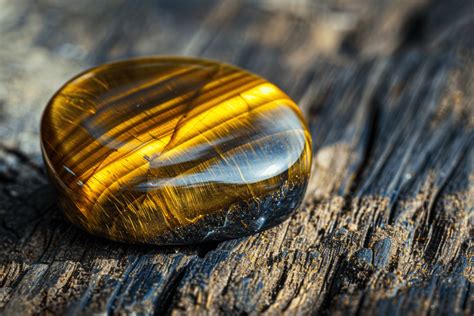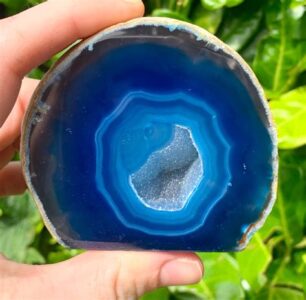Unveiling the Magic of Ultraviolet Light
UV reactive rocks, also known as fluorescent rocks, possess an extraordinary ability to absorb ultraviolet light and emit it as visible light. This phenomenon, known as fluorescence, transforms these ordinary stones into ethereal canvases of vibrant hues when exposed to the invisible spectrum of UV radiation.

Fluorescence is a result of impurities or trace elements within the rock’s mineral composition. When UV light interacts with these elements, their electrons absorb the energy and become excited. Upon returning to their ground state, the electrons release the absorbed energy as photons of visible light, giving rise to the captivating glow.
Identifying UV Reactive Rocks
Not all rocks are UV reactive. Specific mineral compositions determine their ability to fluoresce under ultraviolet light. Some of the most common UV reactive rocks include:
Calcite
– Produces a bright orange-red fluorescence
– Commonly found in limestone, marble, and travertine
Fluorite
– Emits a wide range of colors, including blue, green, purple, and pink
– Often found in hydrothermal veins and limestone
Scheelite
– Glows a brilliant blue or white
– Found in skarn deposits and pegmatites
Willemite
– Emits a vivid green fluorescence
– Associated with zinc ores
Exploring Applications of UV Reactive Rocks
The mesmerizing glow of UV reactive rocks has captured the imagination of artists, designers, and scientists alike. These rocks find applications in various fields, including:
Art and Decoration
– Create stunning jewelry, sculptures, and paintings that glow under black lights
– Enhance indoor and outdoor spaces with UV-illuminated features
Geology and Mineralogy
– Identify and study rock samples in the field or laboratory
– Detect hidden minerals and veins in rock formations
Education and Entertainment
– Engage students and visitors in interactive exhibits showcasing fluorescence
– Host glow-in-the-dark parties and events
Health and Wellness
– Explore the potential therapeutic uses of UV reactive stones in energy healing and meditation
Scientific Research
– Investigate the fluorescence properties of different rocks for geological and mineralogical insights
– Develop novel materials and technologies based on UV reactivity
Generating Ideas for New Applications
To unlock even more potential applications of UV reactive rocks, consider the following approach:
Brainstorming
– Assemble a diverse group of experts in geology, art, design, and engineering.
– Encourage free-flowing ideas and explore unconventional uses.
Trend Analysis
– Monitor emerging trends in art, fashion, and technology.
– Identify potential niches where UV reactivity can enhance existing applications.
Cross-Pollination
– Seek inspiration from other industries that leverage fluorescence.
– Adapt successful concepts to the field of UV reactive rocks.
Step-by-Step Guide to Identifying UV Reactive Rocks
-
Gather Equipment
– UV flashlight (wavelength 365 nm or 395 nm)
– Darkened room or area -
Choose a Rock
– Select a rock that you suspect might be UV reactive. -
Shine the UV Light
– Hold the UV flashlight directly on the rock’s surface. -
Observe Fluorescence
– Look for any visible glow or color changes. -
Identify the Mineral
– Compare the observed fluorescence to known properties of different UV reactive minerals.
Tips and Tricks
- Use a long-wave UV flashlight (395 nm) for optimal fluorescence.
- Allow your eyes to adjust to the darkness before observing the glow.
- Rotate the rock under the UV light to reveal different fluorescent patterns.
- Place the rock against a dark background to enhance the contrast.
- Experiment with different UV light intensities to observe varying fluorescence levels.
Pros and Cons of UV Reactive Rocks
Pros:
- Captivating and unique visual experience
- Potential applications in art, education, and science
- Relatively easy to identify and procure
Cons:
- Fluorescence can fade over time
- Some UV reactive minerals may be harmful to handle or dispose of
- Requires a UV light source to observe the glow
Tables
Table 1: Common UV Reactive Minerals
| Mineral | Fluorescence Color | Found in |
|---|---|---|
| Calcite | Orange-red | Limestone, marble, travertine |
| Fluorite | Blue, green, purple, pink | Hydrothermal veins, limestone |
| Scheelite | Blue, white | Skarn deposits, pegmatites |
| Willemite | Green | Zinc ores |
Table 2: Applications of UV Reactive Rocks
| Field | Application |
|---|---|
| Art and Decoration | Jewelry, sculptures, paintings |
| Geology and Mineralogy | Rock identification, mineral detection |
| Education and Entertainment | Interactive exhibits, glow-in-the-dark events |
| Health and Wellness | Energy healing, meditation |
| Scientific Research | Fluorescence properties, novel materials |
Table 3: UV Light Wavelengths and Fluorescence
| Wavelength (nm) | Fluorescence Intensity |
|---|---|
| 254 | Low |
| 365 | Optimal |
| 395 | Long-wave, less harmful |
Table 4: Fluorescence Fading
| Mineral | Fluorescence Half-Life (Years) |
|---|---|
| Calcite | 10-100 |
| Fluorite | 100-1000 |
| Scheelite | 1000-10000 |
| Willemite | 10000+ |
Conclusion
UV reactive rocks possess an enchanting glow that has captivated humans for centuries. With the advent of modern technology, the applications of these rocks have expanded beyond artistic appreciation into scientific research, education, and even health and wellness. As our understanding of fluorescence deepens, new and transformative uses for UV reactive rocks continue to emerge, promising to enrich our world with their unique and captivating light.




























